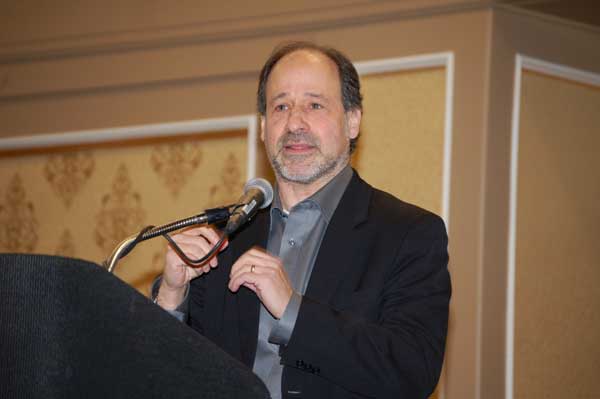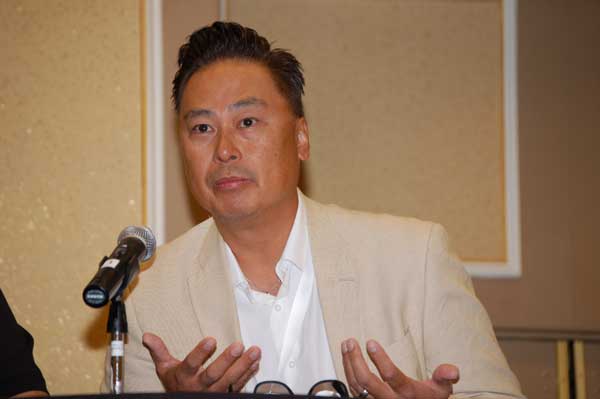A panel discussion at the Collision Industry Conference (CIC) in Las Vegas in November included representatives from a number of technology companies touting the potential benefits---for auto body shops and insurers---of artificial intelligence (AI) estimating, but also acknowledging some of its current limitations.
“We’re not there yet, 100%, with straight-through processing,” said Dune Pagaduan of Mitchell International, referring to AI being capable of completing all estimates without human interaction. “So is AI real? Sure, it assists us in making and automating decisions, thousands at a time…more quickly so that we shrink cycle time. But you still need experts, humans, to complete the whole process.”
He said AI systems can currently write accurate estimates on “low-severity collisions.”
“But when you get to higher severity type collisions---more complex, more parts---then that’s the journey we have to go to get to that 100%,” he said. “I think in the next two to three years, we’ll get there.”
The panelists were asked if any AI system built on historical data can identify substrates, systems and OEM procedures for nearly new vehicles often involved in collisions.
“That is the challenge,” Pagaduan said, noting historical data ideally needs to be paired with other information in the system, like OEM build sheet data and OEM repair procedures for the specific vehicle. “So not everything is AI. We combine it with the OEM procedures and our editorial data to produce that specific accurate estimate."
In discussing what AI estimating offers shops specifically, the panelists noted the wide variance in estimates often seen even when different estimators look at the same vehicle. AI can help collision repair businesses increase consistency in their estimating, Pagaduan said.
Panelist Jason Verlen of CCC Intelligent Solutions said it also offers shops access to photos and information even before the customer arrives.
He noted as recently as three years ago, fewer than 1% of vehicle claims involved photo-estimating.
“As of today, roughly 22% of repairable claims go through the process,” he said. “And we have some carriers on our system where over 70% of their repairable claims go through photo AI.”
CCC offers a product, Estimate-STP, which, Verlen said, on low-impact collisions can write a complete estimate with no needed review or changes by a human. Beyond that, he acknowledged, it’s still “a joint process between the human and the AI.”
But the AI does “make the process much more efficient,” he said, in part by getting a consumer an estimate faster, which in turn speeds their decision-making about choosing a shop and scheduling repairs.

“So there’s huge increases and improvements in cycle time” and the customer experience, Verlen said. “But it’s not like AI solves all the world’s problems.”
He noted the panel moderator talked about recently watching an estimating contest at a Texas trade show in which 16 estimators writing for a quarter panel replacement on a mainstream vehicle came up with 16 different estimates, ranging from 130 lines to 400 lines.
“So someone may ask me: ‘Is your AI accurate? Does it match what a human would do?’ My answer is: Which one of those [16] guys do you want me to match,” Verlen said. “That’s why I say AI is no magical bullet. That’s why we combine AI with build sheet data, with business rules, with insurer guidelines, and that’s how we come up with an estimate that’s reasonable to the situation.”
He suggested to “reduce skepticism” among new users, the systems’ thresholds should be set high at first so “virtually everything the AI generates on an estimate a human will agree to.” Then gradually loosen the thresholds to get more complete estimates, he said, after skeptics have “been trained to see that it does work” even if there are at times a “difference in opinion.”
Jimmy Spears of Tractable said his company’s artificial intelligence estimating system has become adept at quickly determining from photos if a vehicle is a total loss.
“One of things that AI does a wonderful job on is triage,” Spears said. “We’re in the high 90s of calling balls and strikes: Is this car repairable or is this car not repairable.”
For insurers, he said, the system can produce 40% of initial estimates “without any further line items” needing to be added. An equal percentage require review of one or two line items---with the estimate annotated as to what an appraiser needs to review---while the balance will require being handled “old school: have it towed, take the car apart and go classic blueprinting.”
Moving beyond that 40% of initial estimates “without any further line items” needing to be added will require greater access to vehicle-specific OEM build sheet data, he said.

“If we get that, we’re going to have a greater understanding of that vehicle, the DNA of that car,” Spears said. “And then we’re going to have a much better understanding of what this car really needs, its repair process. We have got to solve the problem of build sheet data, and we’re in the right room for that.”
In the interim, he said, AI estimating offers benefits to more than just insurers. Tractable has a test going with LKQ Corp., he said, using the technology in a bit of a reverse way: helping determine which parts are not damaged on salvage vehicles.
It could also help collision repairers with the customer sales process, Spears said. Currently, estimators point a potential customer to a waiting area while preparing an estimate.
“Instead, they’re going to be able to quickly take some images of the car, and then while the images are being processed, they can take the customer around the shop and show the investment that you have” in equipment, training and certifications, Spears suggested. “When they get back to the desk, here’s the estimate.”
More news from the November CIC meeting: Do Automakers, Insurers See Auto Body Shops Meeting Both DRP and OEM Certification Requirements?










John Yoswick